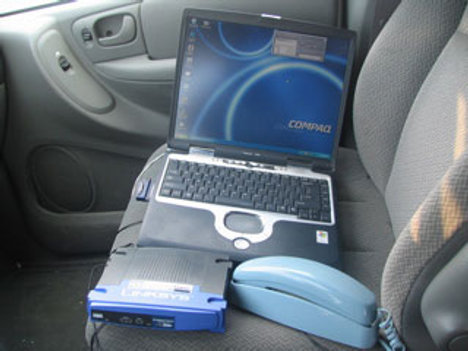What is Wardriving?
The act of searching for WiFi networks with a laptop or mobile device while driving is referred to as wardriving. The term originated from “wardialing,” which came from the hit movie War Games in which random phone lines that were connected to a modem were searched for. Although wardriving was originally developed in order to search for unprotected Wireless networks, the current practice of mapping unprotected networks with GPS location data was developed in the spring of 2001.
What is Wardriving?
Wardriving captures information about network and Internet usage. Although it is traditionally done from a vehicle, it can also be done on a bicycle, on foot, or from an aircraft. The act of researching wireless networks in this manner is not generally considered illegal in the United States. However, if network access can be proven, the person conducting the wardriving may be subject to criminal charges ranging from theft of services to the misuse of computing resources (see the Federal Computer Fraud and Abuse Statute or Theft of Trade Secrets).
How to Protect Against Wardriving
It is almost impossible to detect whether someone has captured another’s network information. As a result, both the U.S. FBI and Federal Trade Commission (FTC) recommend, but do not require, that wireless networks are secured. With the current technologies available, WPA (WiFi Protected Access) is recommended over WEP (Wired Equivalent Privacy) because the WEP encryption standard is subject to “cracking” through network traffic analysis. Additionally, it is recommended that the default router identification and password are changed and that a firewall and anti-virus software are used on the network. Network administrators should specify the individual devices permitted to access their network resources by entering the MAC addresses for each computer or mobile handset. Countries with stricter privacy laws go further than the United States. They require network administrators or owners to password protect their wireless networks or be subject to fines.
Tools Used to Wardrive
Many free software are available that can be used in wardriving. These include NetStumbler (the best known software package), SSIDer, Kismet, SWScanner, NetBSD, OpenBSD, DragonFly BSD, and KisMac. More recently, wardriving applications were developed for hand-held gaming devices such as Road Dog (Sony PSP), WiFi (iPhone), G-MoN (Android), and Sniff_JazzBox (Nintendo DS). Some devices can be connected to an external antenna to increase their WiFi detection range. Those who wardrive with such devices use Cantenna and WokFi antennas to significantly increase the number of networks they detect.
Is Wardriving Illegal?
There are no explicit laws in the United States that permit or prohibit wardriving. There are a number of local laws, however, that forbid unauthorized access to computer networks and associated personal information. Since passive wardriving does not communicate with available networks and only logs available information that is broadcast, it does not violate these new regulations found in some towns or cities in the U.S. For active wardriving software such as NetStumbler, which sends out probing messages, the device temporarily associates with the targeted network and enters a “gray” area for many localities.


Comments - No Responses to “What is Wardriving?”
Sorry but comments are closed at this time.